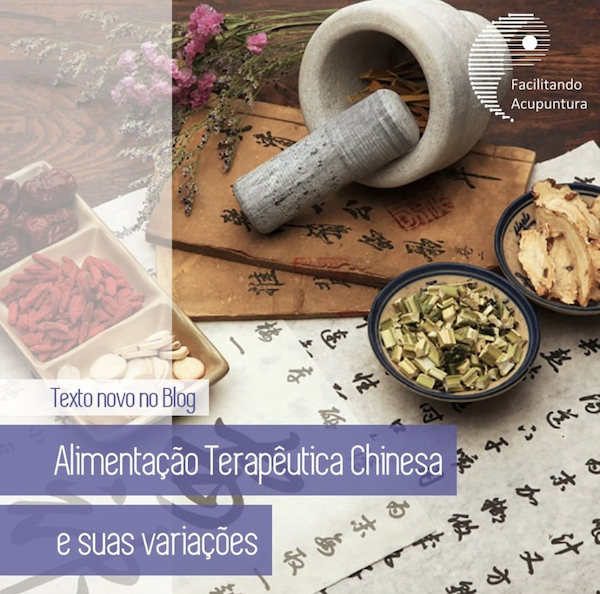 Good morning Dear Readers,
Good morning Dear Readers,
Today we are going to talk a little about Chinese Therapeutic Food and its variations in Traditional Chinese Medicine.
Also known as Chinese Diet Therapy, this treatment resource is widely used within eastern therapies to promote the patient’s energy balance. As we are talking about energy, its indications and contraindications are very different from western diet therapy.
So be aware, reader: Therapeutic Food/Chinese Diet Therapy is NOT the same thing as a Western diet, recommended by a nutritionist, so every professional trained in Chinese Medicine can prescribe this type of treatment.
But let’s go by parts.
Food can be indicated in several ways, namely:
1) Food Color
Foods have colors that are associated with the energy balance frequency of specific organs and viscera. When there is a deficiency in the functioning of these organs and viscera, the patient should be asked to consume foods that have the color corresponding to their energy frequency:
- Red – Heart and Small Intestine.
- Yellow – Spleen and Stomach
- Whites – Lung
- Dark purples, blacks – Kidney and Bladder
- Greens – Liver and Gallbladder
This technique is the easiest to use and we use it most of the time for toning the organs and viscera. It can also be applied according to the 5 Elements rules, indicating and against indicating the colors according to the patient’s need.
2) Taste of Food
Just like the colors, each flavor has an energetic connection with each organ and viscera. When there is a malfunction of one of them, the corresponding flavor can be indicated:
- Sour – Heart and Small Intestine.
- Sweet – Spleen and Stomach
- Spicy – Lungs and Large Intestine
- Salty – Kidney and Bladder
- Acid – Liver and Gallbladder.
It is very important for the therapist to know that often what we feel in the mouth is not always the classification of food by flavors. For example, rice, which we tend to think of as salty, has a sweet essence. Milk, which we tend to think of as something neutral, is acid. Therefore, the therapist must follow tables so as not to make a mistake when prescribing.
Still following the same technique of colors, flavors can be indicated directly to organs and viscera when they are in deficiency and have the potential to rebalance energy when using the laws of the 5 Elements.
3) Thermic Essence of Food
The Thermal Essence of Food is the best way to indicate and contraindicate foods when the therapist works, in Chinese Medicine, with evaluation through Syndromes.
Food is divided into Cold, Fresh, Neutral, Warm and Hot and for each of the Elements there is a table with these subdivisions.
As a rule:
- Cold foods – solve heat illness
- Fresh Food – cools the heat and produces fluids (including Blood)
- Neutral Foods – balances Qi and Blood
- Warm foods – move Qi and Blood and warm the cold.
- Hot Foods – solve cold diseases.
Thus, the therapist, knowing which syndrome the patient is suffering from, will be able to properly indicate the food according to its thermal essence in the amount and number of days that is necessary.
In summary, there are many ways to treat the patient using Therapeutic Food. All of them bring many benefits to patients and are often the best resource that can be indicated in the cure and prevention of some energy imbalances.
I hope you liked the text.
A big hug.
Fernanda Mara